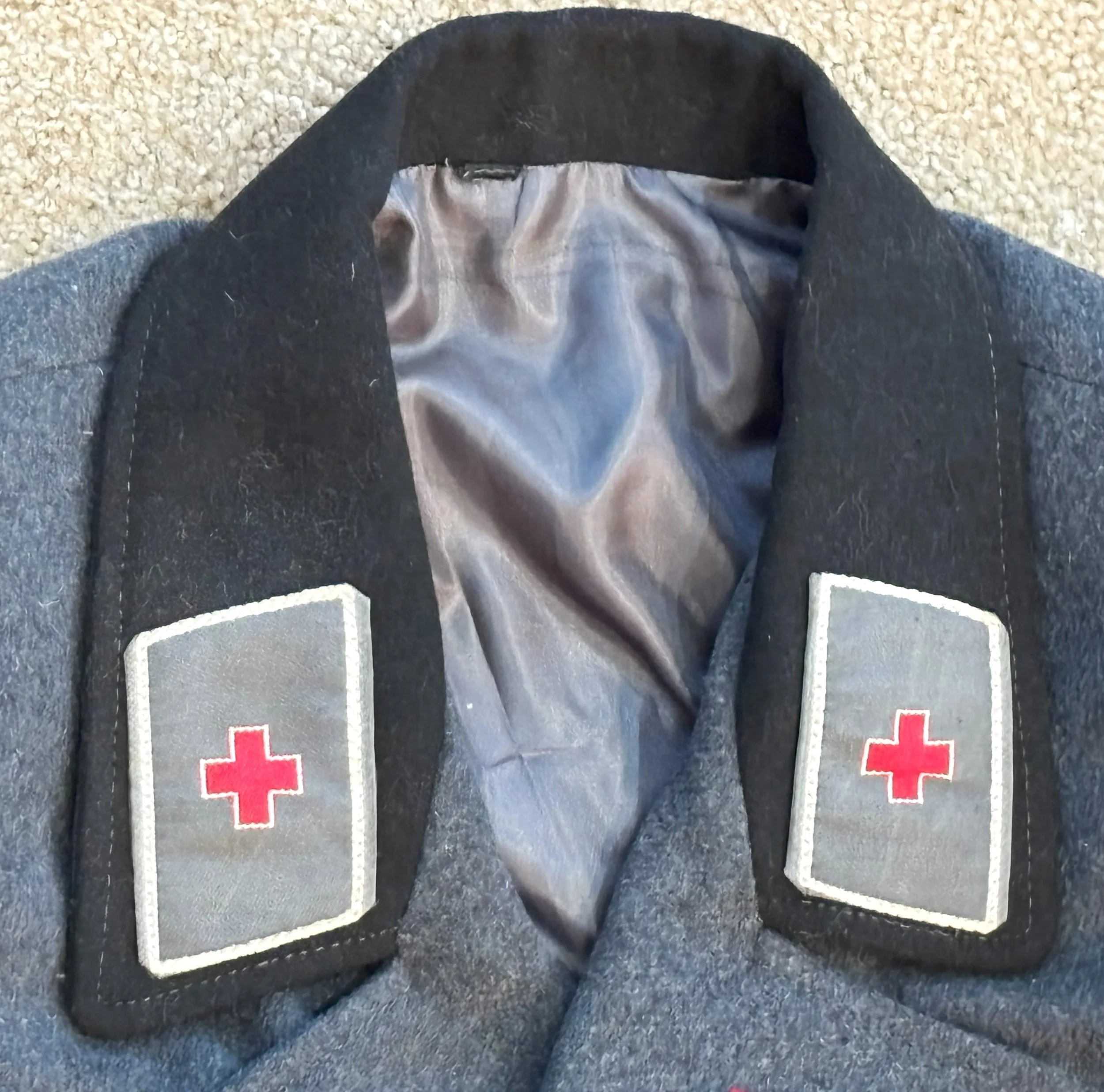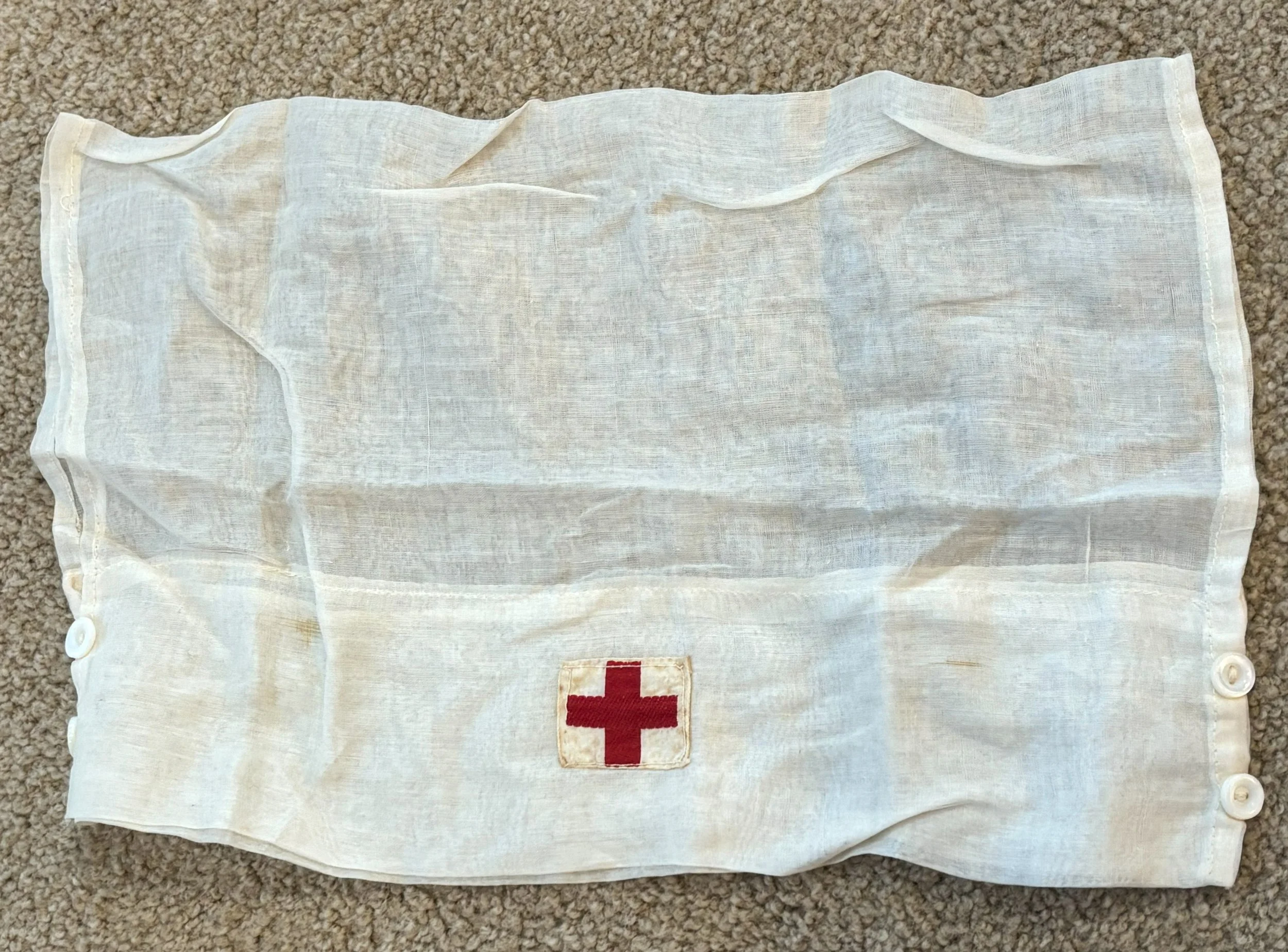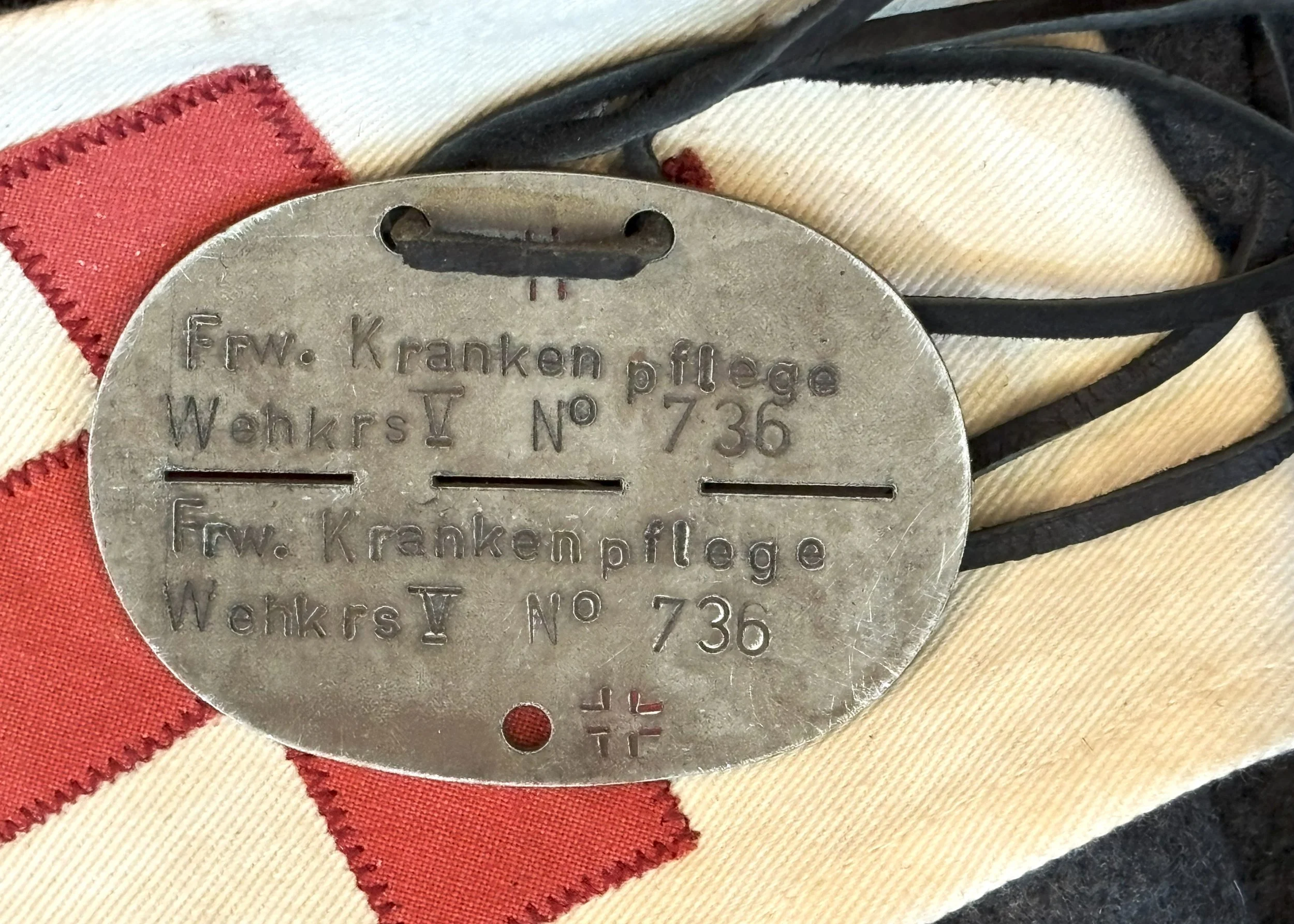German Red Cross (DRK):
D.R.K. Vorhelfer, Deutsche Rotes Kreuz (Male-Orderly):
The Deutsche Rotes Kreuz (DRK) or German Red Cross provided emergency assistance during disasters in Germany. The organization was under the control of the Reich Ministry of the Interior, and although the rank and file were unpaid volunteers, the organization's leaders were full-time, paid employees. Like most civil organizations of the time, it had a military-style command and control structure. In late 1938, the German Red Cross was integrated into the Ministry of the Interior's Social Welfare Organization. In preparation for the impending war, air raid and gas attack training for the population was prioritized by the DRK while also jointly training exercises with local Polizei and fire brigades. Male Deutsches Rotes Kreuz members saw service on all fronts in roles such as stretcher-bearers, medical personnel, and drivers, transporting wounded and supplies between the front and rear.
Members of the DRK were also seen used in roles such as manning Feldpost stations, and monitoring and sorting Feldpost. Female DRK volunteers were found predominantly in nursing roles of various skill levels. The Vorhelfer has volunteered from his hometown of Düren, a town in North Rhine-Westphalia located between Aachen and Cologne on the river Rur. Düren was the center of the main fighting front during the Allied invasion of Germany. During 1944 and 1945, the protracted and bloody Battle for Hürtgenwald was fought in Düren's district area, and on 16 November 1944, Düren was destroyed by Allied air bombings. Approximately 22,000 people lived in Düren at that time, and 3,000 of them died during the bombing, putting a massive strain on the local DRK and its members. Wearing a later war production uniform, the Vorhelfer is typical of those serving long, hard hours aiding local citizens.
“Updated Pictures” D.R.K. Vorhelfer Deutsche Rotes Kreuz (Female):
The Krankenschwester, the German term for a medical nurse, also comes from Düren and has served near the battle lines of the Ost u. Afrika Fronts. Officially not authorized to be closer than 15 kilometers from the frontline, her Verwundetenabzeichen in Schwarz indicates she has been under enemy fire in a battle zone. Period photographs show several DRK and foreign volunteer nurses with combat awards. The wool DRK uniform tells her story, displaying the Eiserne Kreuz II. Klasse ribbon, Wound Badge in Black (that was missing for a while, I didn’t realize it was just pinned on), the Ost Front campaign ribbon, as well as the Afrika Campaign Ärmmelstreifen. Worn with this Bluse are a matching skirt, hose, black shoes, and a white nurse cap. When on duty, she will wear the pinstriped cotton uniform with a white or dark blue apron. Photographic evidence indicates a tropical uniform, complete with a Troppenhelm (sun helmet), existed. Lower-ranking male members of the organization were authorized to wear a blunt-blade hewer-style dagger with a saw-back blade. The unique design was twofold, intended to be a tool for the DRK members that would be useful in performing their duties in the field, and at the same time avoid being viewed as a “weapon”, as the International Red Cross prohibited the carry or use of weapons by those working under that banner.
The DRK Hewer was authorized for wear in 1938 and was 15.8” in overall length with a 10.5” long blade and a 5.3” long hilt. The hilt was unique in that the two scales (grip panels) were of different styles, with the obverse panel being checkered hard rubber and the reverse panel being smooth hard rubber. The metal mountings were either nickel or silver-plated. The DRK logo, a stylized drop-winged Nazi Eagle with a Swastika on its breast and the Red Cross symbol in its talons, was prominently placed on the obverse cross-guard. The scabbards were steel, painted a gloss black with either nickel or silver-plated fittings, matching the hilt. The scabbard was carried in a leather frog, similar to those used for bayonets. The Eiserne Kreuz II. Klasse document of Krankenschwester Isle Schultz awarded in Afrika
Sturmbannfuhrer, Deutsches Rotes Kreuz:
The Deutsches Rotes Kreuz assisted in the hospitals and throughout the community, especially as the war began to take its toll on the German cities. Organized on a military basis ( that always happens with Nationalists, Socialists, and Dictators), the German DRK could move personnel and equipment throughout a Wehrkreis area as needed. Many of its leaders had military experience, and like this Sturmbannführer, were not fit for Military Service due to wounds received in the 1914-18 conflict.
The uniform was cut in the non-Prussian, more National Socialist open collar with a tie cut. The military looks with a German Red Gross insignia on it. He has made up a fine Schirmmutz to go with the uniform. The insignia of the DRK was set up along the same lines as the other service organizations, in the NSDAP, as the SS.
This Sturmbannführer has continued in some sort of support manner, and in some military actions, where he has earned the 1939-KVK 2nd Class and 1st Class medals. He won the EK-II and Kriegsmarine Gold Wound Badge from the 1914-18 Conflict. He has also earned the Social Welfare Award for services in the DRK. Well-trained in medicine and the medical service, going from field medic, hospital nurse, and assistant Doctor. Quite possibly a Sergeant in the front lines at one time, he has seen plenty of the horrors of War. He is now a big picture guy, serving in Administration, in charge of Hospital (I’m thinking, in Düren), rather than operating tables, trying to put people back together.



























































